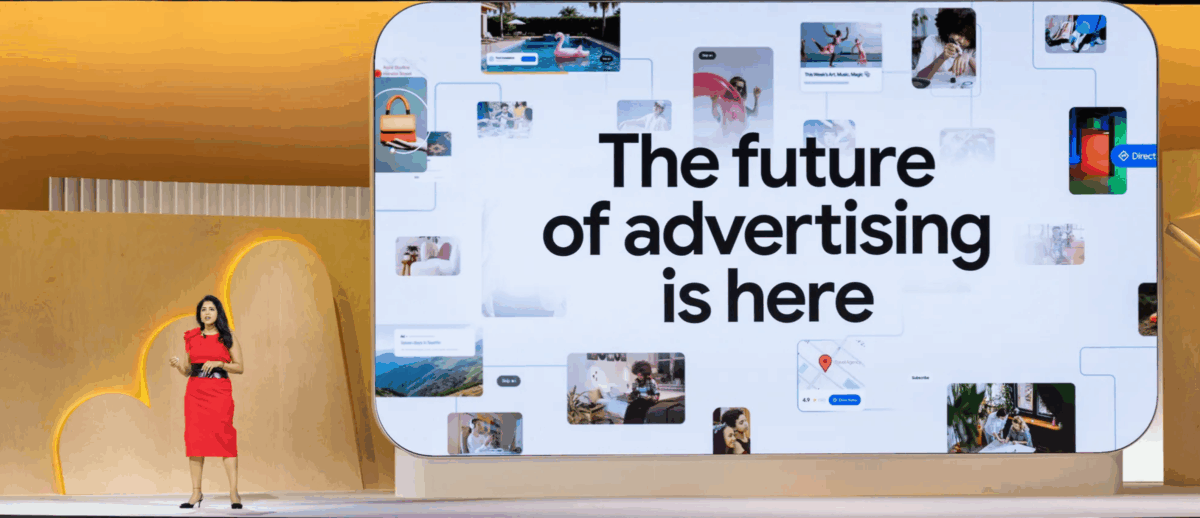As Google doubles down on AI-led innovation, this year’s I/O and Google Marketing Live events mark a turning point in the search landscape.
With 26 years of search evolution behind us, we’re witnessing a redefinition of the user journey, where AI powered answers take centre stage.
The “answer engine” experience popularised by tools like ChatGPT is now core to Google’s product roadmap, and with that, comes a wave of updates that will reshape organic visibility, traffic, and advertising.
Below is a digest of the most relevant updates and what it means for search marketers and digital strategists.
1. AI Mode in search
Google’s launch of “AI Mode” introduces a conversational search interface powered by Gemini 2.5. This feature delivers synthesized, context-aware answers – often without the need to click through to websites.
AI Mode is gaining capabilities that go well beyond what’s possible with a traditional Google search. One standout is Deep Search – Google’s response to the growing demand for research-grade answers. It deconstructs a user’s prompt into a series of underlying queries, then scours the web to compile a comprehensive, structured response that’s tailored for depth and nuance, even on complex topics.
Meanwhile, Project Mariner, once an experimental feature, is now integrated directly into AI Mode. This agent can autonomously browse websites, compare information, and complete tasks – like planning travel or securing event tickets – without additional user input.
And with the introduction of Search Live, users can now engage in real-time dialogue with the search engine, including visual search via smartphone camera, further blending conversational AI with real-world context.
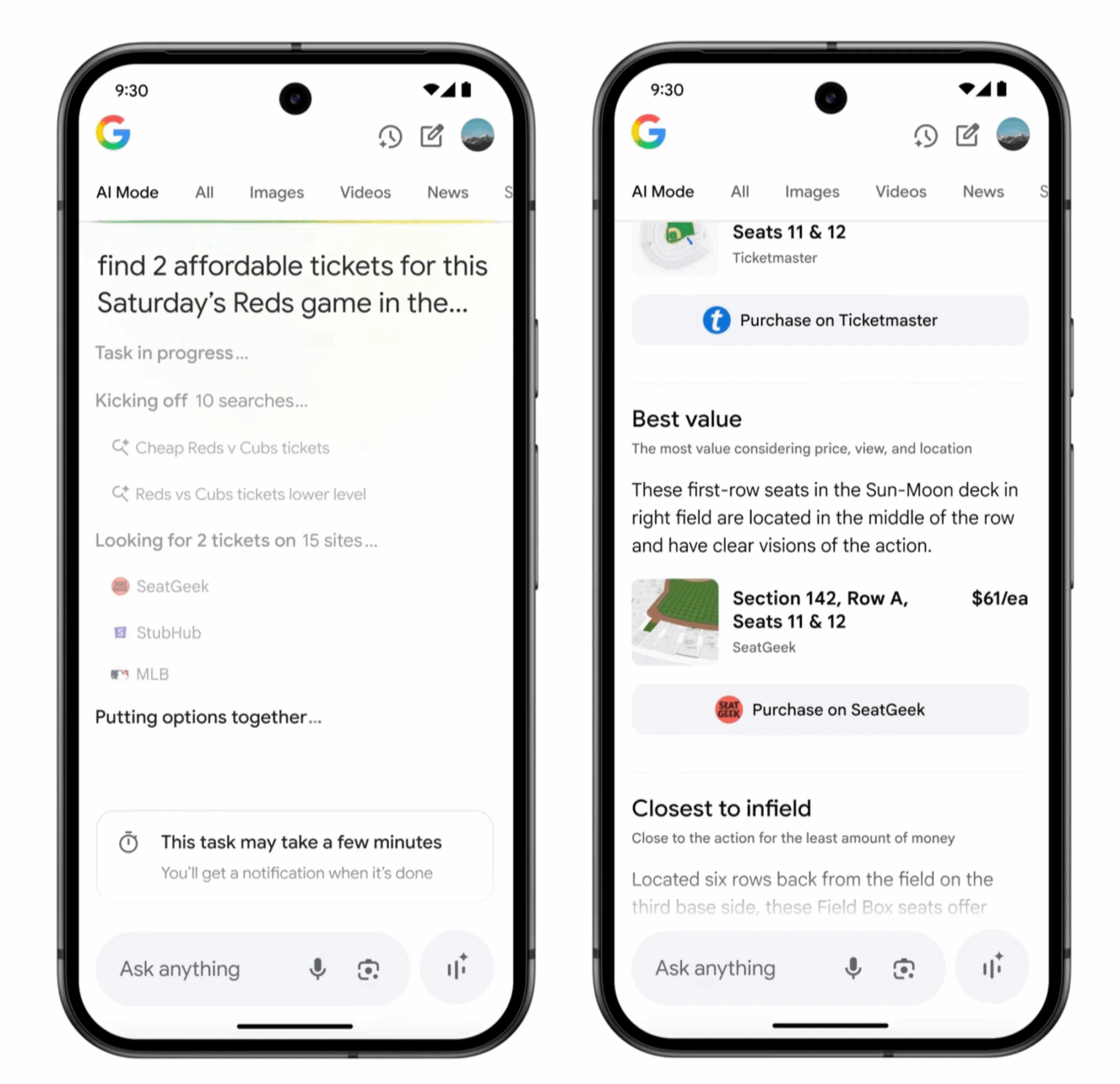
2. Ads in AI overviews
In a move both expected and contentious, Google confirmed that ads will now appear within AI Overviews and AI Mode results.
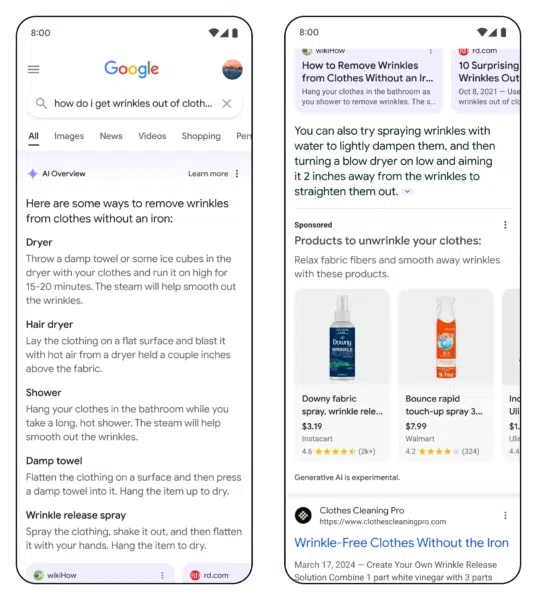
These placements are powered by existing campaigns and adapt dynamically to user context, such as demographics and keyword intent.
3. Goodbye ‘Power Pair’, hello ‘Power Pack’
Google unveiled a reinforced suite of campaign tools under the “Power Pack” banner. The Power Pack isn’t a new product – it’s a rebranded strategy that bundles together existing tools: Performance Max, Demand Gen, and the newly renamed AI Max for Search (formerly “Search Max”). It’s essentially a new positioning of familiar campaign types, marketed as a unified AI-powered solution for Google advertisers.
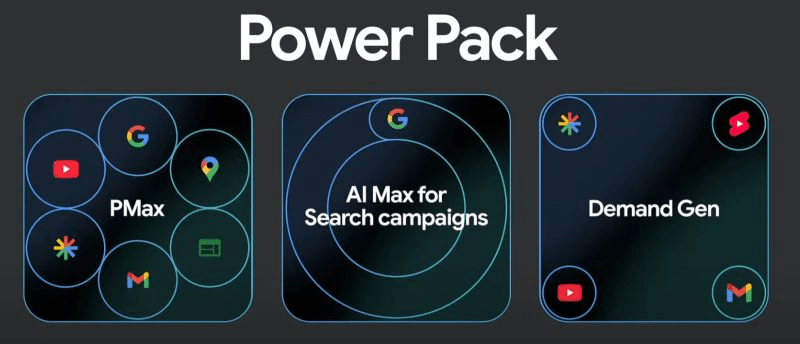
Industry sentiment so far is mixed. While some welcome the shift, they are yet another move toward reduced transparency and a keywordless ad ecosystem.
We’ll be actively testing and consulting on this in the months ahead to assess whether Power Pack offers genuine performance uplift, or if it’s more branding than breakthrough.
4. Smart bidding exploration mode
Google’s new bidding functionality enables campaigns to reach high-potential but less obvious queries.
“Exploration Mode” is designed to surface moments where users are mid-funnel – researching, evaluating, and not yet ready to convert, therefore broadening the reach of performance campaigns in the discovery phase.

5. AI-powered creative tools: Veo & Imagen
Google is integrating creative tools like Veo (video) and Imagen (image generation) into its ad ecosystem.
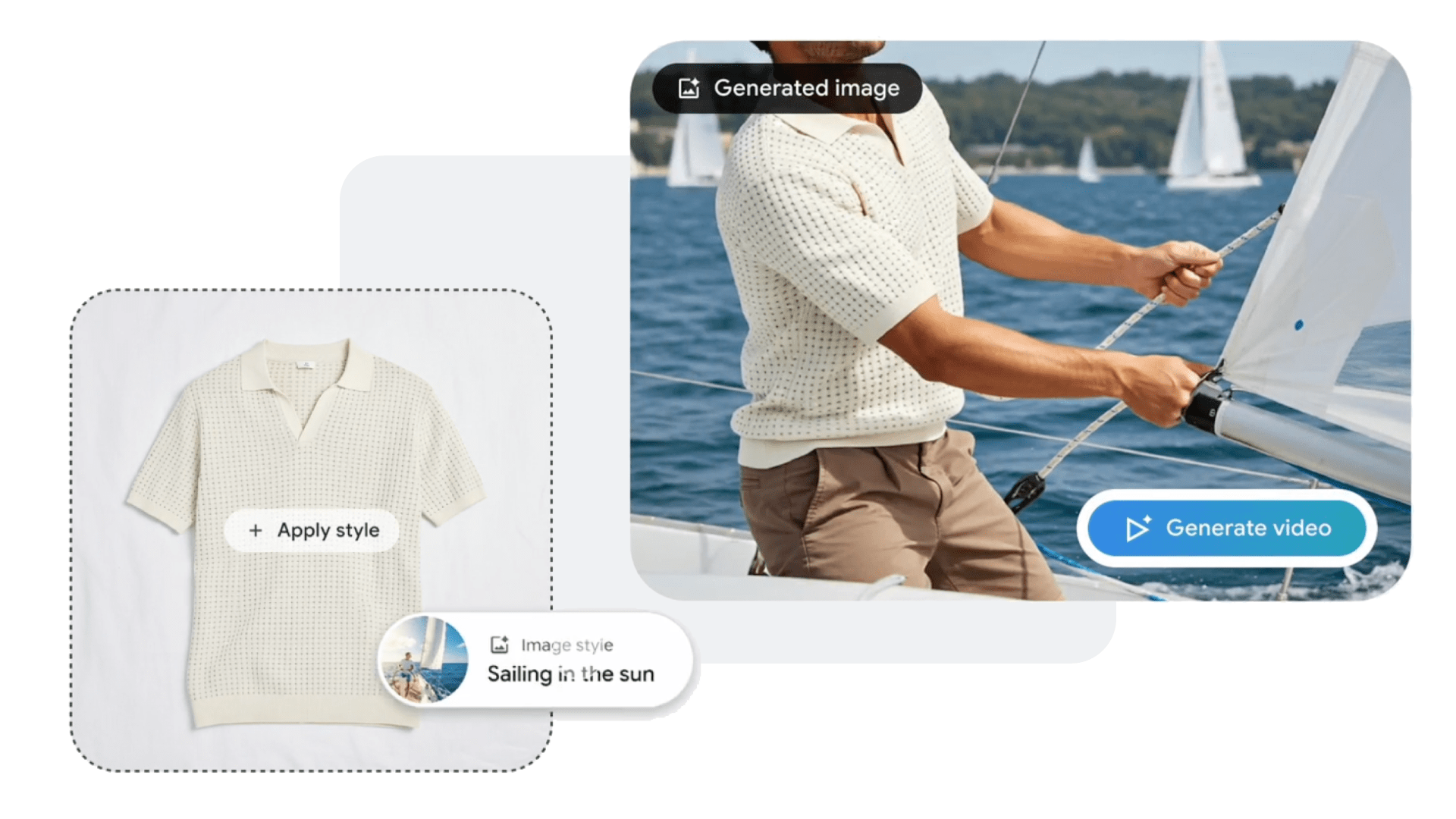
These allow marketers to generate on-brand assets quickly within Google Ads and Merchant Center, significantly speeding up content production and iteration.
6. Measurement & attribution upgrades
Enhanced AI-powered measurement tools now give smaller advertisers access to performance data traditionally reserved for enterprise accounts. This includes incrementality testing and more precise ROAS reporting across multi-touch journeys.
Incrementality measurement will reportedly be coming soon to advertisers straight in the Google Ads UI, globally.
7. Agentic assistants
Google is taking the next step in automating campaign management with “agentic” tools – intelligent systems designed to work alongside marketers throughout the entire lifecycle of a campaign.
From build to reporting, these AI agents analyse landing pages, campaign assets, performance data, and business inputs to recommend, and in some cases, directly implement optimisations. Think keyword suggestions, creative tweaks, and bid adjustments, all grounded in real-time data and tailored to specific campaign objectives.
In Analytics, these same capabilities now surface proactive insights and visualise trends that might otherwise go unnoticed.
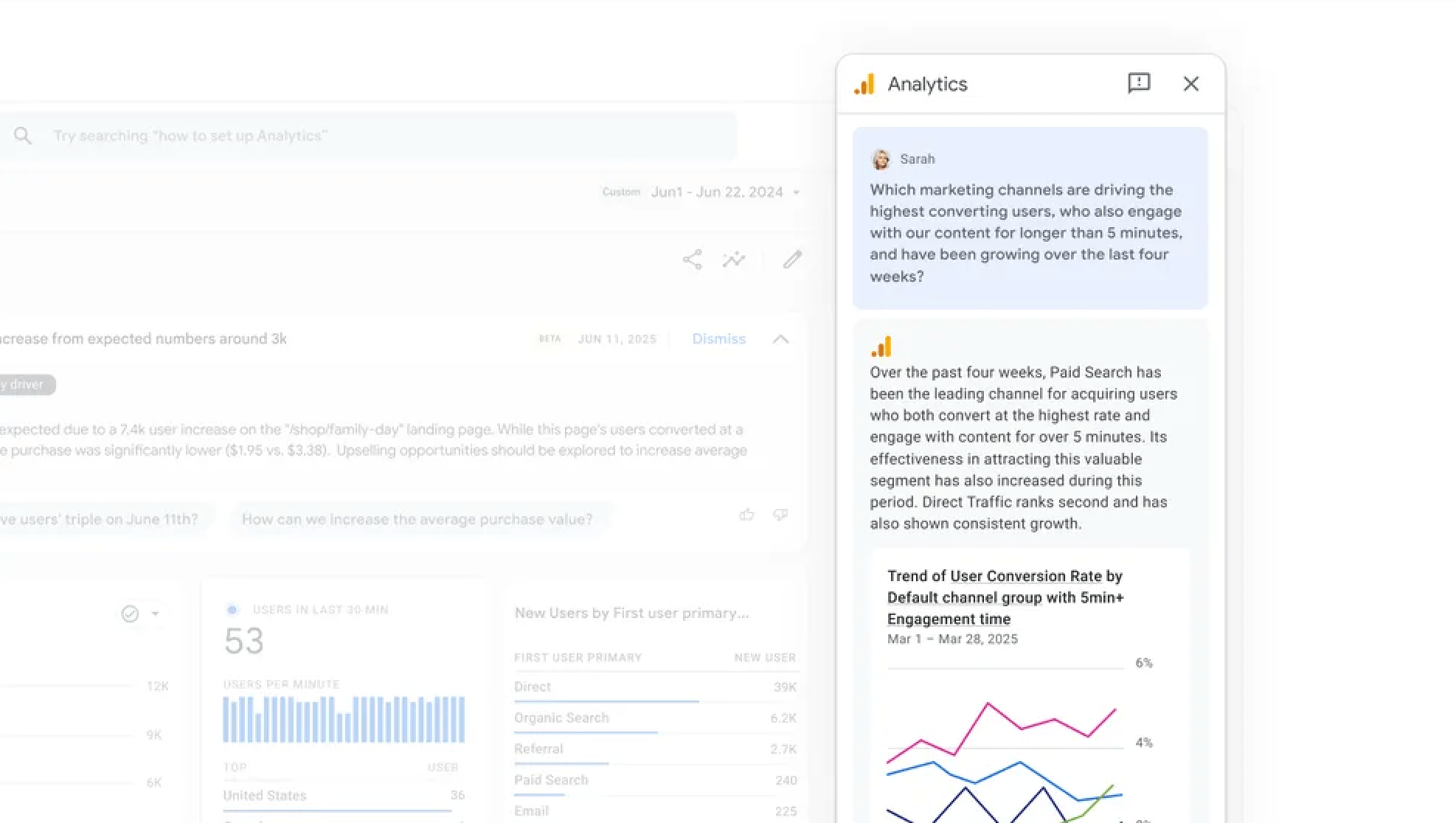
The aim is to cut through the noise and help teams act faster, with clearer direction and less time spent digging through dashboards.
Final thoughts
As AI Mode and AI Overviews reshape how users engage with information, both organic and paid marketers must adapt. Expect a decline in traditional traffic-driving SERP formats, a surge in zero-click experiences, and growing reliance on AI to guide media buying, content creation, and campaign strategy.
For marketers, the challenge now is twofold: navigate these changes without losing visibility, and harness Google’s AI capabilities to outpace competitors who are slower to adapt.
At Hallam, we’re already recalibrating measurement models, content strategy, and campaign architecture to ensure our clients continue to lead in this AI-first search era.
If you have questions or want to explore how these updates impact your strategy, let’s talk.

